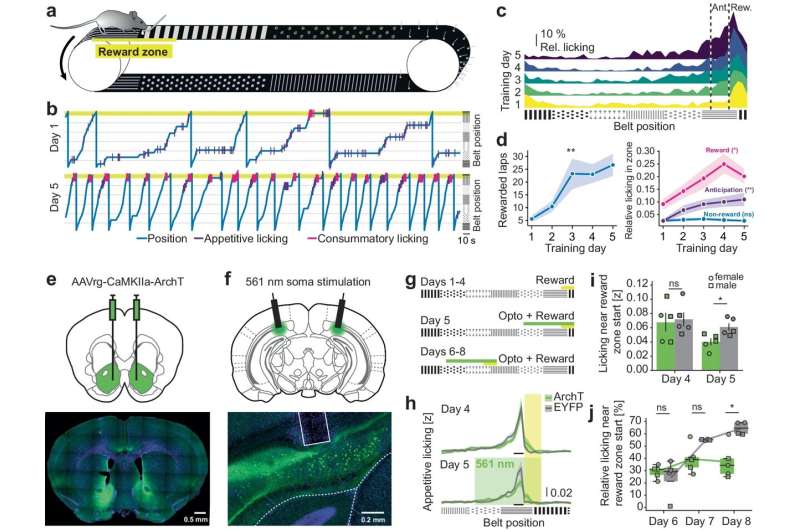This article has been reviewed according to Science X's editorial process and policies. Editors have highlighted the following attributes while ensuring the content's credibility:
fact-checked
peer-reviewed publication
proofread
Dialogue between brain regions: How memories guide us to rewards

Picture this: You want to take a walk to your favorite ice cream parlor for the first time after winter. You can probably remember how to get there. How does our brain guide us to such rewarding places? In a study recently published in Nature Communications, researchers from the Leibniz Institute of Neurobiology (LIN) in Magdeburg used state-of-the-art methods to answer this question. They discovered that our brain uses a special code to guide us to places that promise rewards.
In the recently published study, the researchers focused on the connection between the hippocampus and the nucleus accumbens, an area of the brain responsible for motivation and reward. The hypothesis is that communication between the two areas helps us to find places where we were previously rewarded.
Although it was known that these regions work together, it was previously impossible to directly observe the activity of numerous neurons and know where they are sending information. "What we have discovered is nothing less than the 'language' that our brain uses to guide us to the places we love," explains Oliver Barnstedt, first author of the study.
Barnstedt, Petra Mocellin, and Stefan Remy are researching the hippocampus at the LIN—an area of the brain that is crucial for remembering life events and spatial orientation and, therefore, plays a key role in memory. Damage to the hippocampus leads, among other things, to the loss of the ability to form new memories.
Remy, head of the Cellular Neuroscience research group, therefore concludes, "The ability to decipher high-dimensional neuronal codes could lead to more precise therapies that directly target the restoration of memory functions."
Innovative methodology
The scientific team working with Barnstedt used a range of novel optical and analytical methods to understand how the two brain regions communicate with each other. Using special fluorescent proteins and two-photon microscopy, the scientists were able to track the neuronal activity and the connections to the reward center in the brain.
Over 5,000 neurons were monitored to see how and when they became active—a ground-breaking method to understand how mice trained on a treadmill—reminiscent of a natural environment—identify and respond to reward locations.
The team's research suggests that nearly half of the neurons leading from the hippocampus to the nucleus accumbens simultaneously encode information about place and movement—a milestone in understanding how the brain integrates spatial and reward-related information.
This multidimensional networking enables the brain to anticipate with high precision the places that give us pleasure. It is as if our brain cells map in advance the "happiness" of a rewarding experience such as visiting our favorite ice cream parlor.
Significance for medicine and therapy
"This study marks a turning point in our understanding of spatial memory and reward—and opens up new avenues for the treatment of diseases such as Alzheimer's and addiction," says Barnstedt. The insight into high-dimensional neuronal coding offers new approaches for the treatment of spatial disorientation in Alzheimer's patients and for therapeutic strategies for addictive behavior.
A deeper understanding of the neuronal processes that have now been visualized could be the key to more effective therapies.
More information: Oliver Barnstedt et al, A hippocampus-accumbens code guides goal-directed appetitive behavior, Nature Communications (2024). DOI: 10.1038/s41467-024-47361-x



















